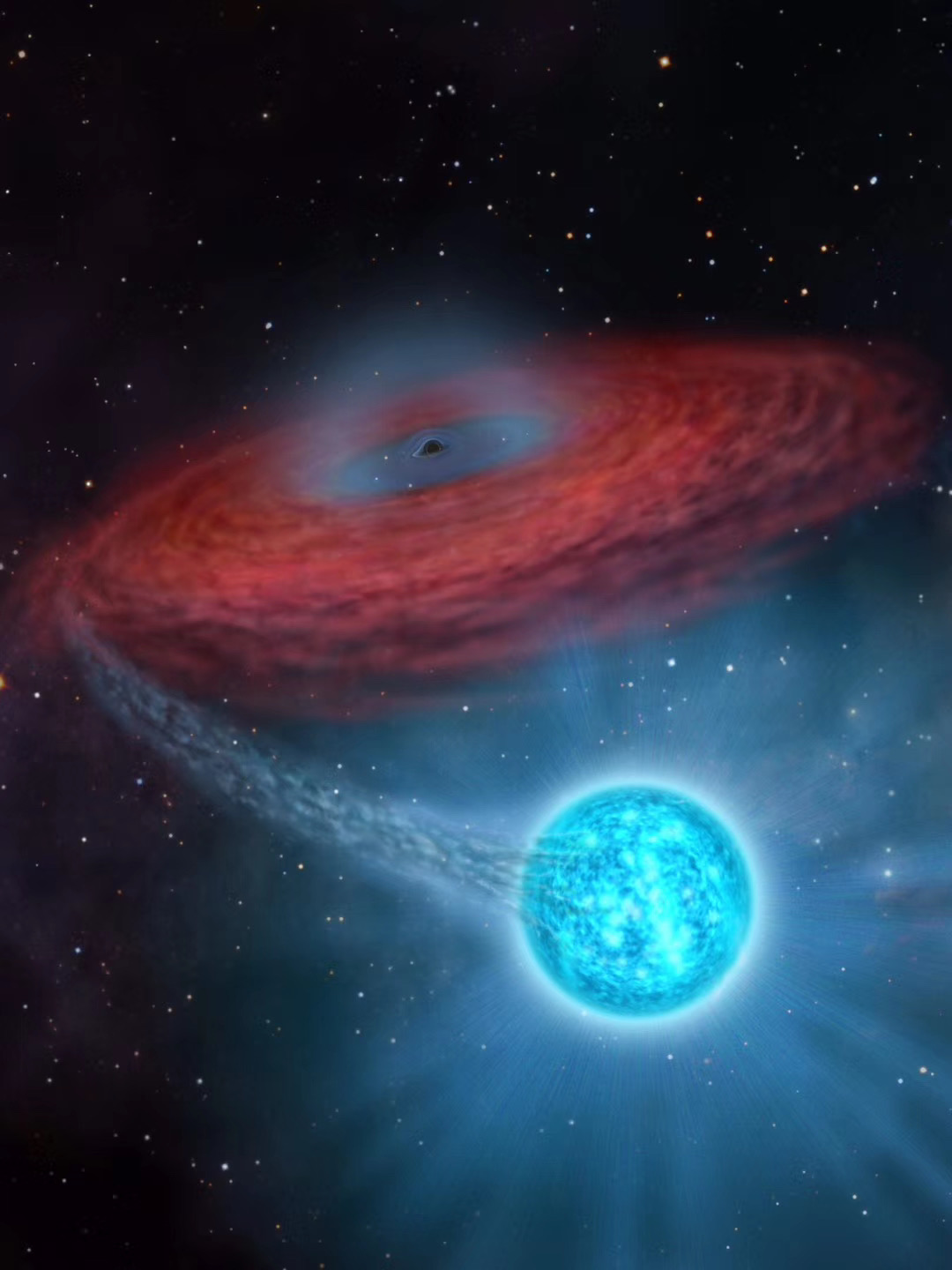Biggest stellar-mass black hole discovered


LB-1 was first spotted by Chinese scientists in 2016 using spectrum data collected by the Large Sky Area Multi-Object Fiber Spectroscopic Telescope, the world's largest spectral survey telescope, located in Hebei province.
An international team of 55 scientists from 28 research institutions in seven nations, including China, the United States and Spain, have worked together in the past three years to confirm the discovery. The findings were published on Thursday by the journal Nature.
Stellar-mass black holes are much smaller than supermassive black holes, with mass estimated to range from three to 100 times that of the sun. Sagittarius A, the supermassive black hole at the center of our galaxy, is about 4.3 million solar masses.
There should be over 100 million stellar-mass black holes in the Milky Way, yet scientists have only discovered around 20 such entities, all below 20 times solar mass, in the galaxy due to their relatively small size and ability to absorb all light, said Liu.
"We typically look for stellar-mass black holes by looking at the X-ray signals emitted when their immense gravity is gobbling up gas from a nearby star," he said. "But this method will inevitably leave out most black holes because not all of them are engaged in a cosmic banquet and thus do not emit X-rays."
To overcome this obstacle, scientists used the powerful spectrum surveying capability of LAMOST, the Hebei telescope, to find stars that are seemingly orbiting an invisible object. Though this technique was first proposed in the 18th century, it is an extremely time-consuming process that has only become feasible with recent improvements in telescopes and detectors.
Cui Xiangqun, the chief engineer for LAMOST's operation and development, said the discovery of LB-1 has proved the feasibility and efficiency of using LAMOST to carry out such techniques. China has launched a "black-hole hunter" initiative to search out nearly 100 stellar-mass black holes in the Milky Way galaxy in the next five years.
Roberto Soria, a professor of astrophysics at the University of the Chinese Academy of Sciences, said global cooperation plays a key part in the latest discovery.
"The universe is so big that no astronomy research can be done quickly with one telescope alone," he said.


















